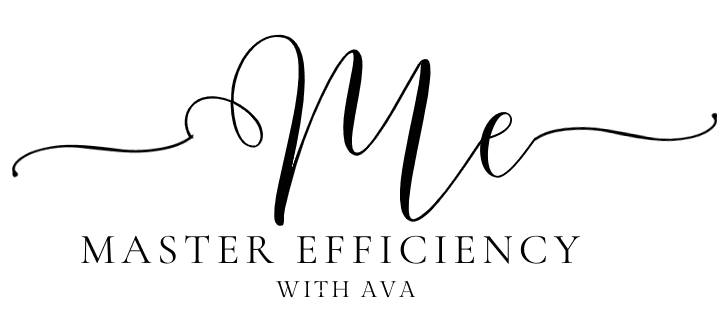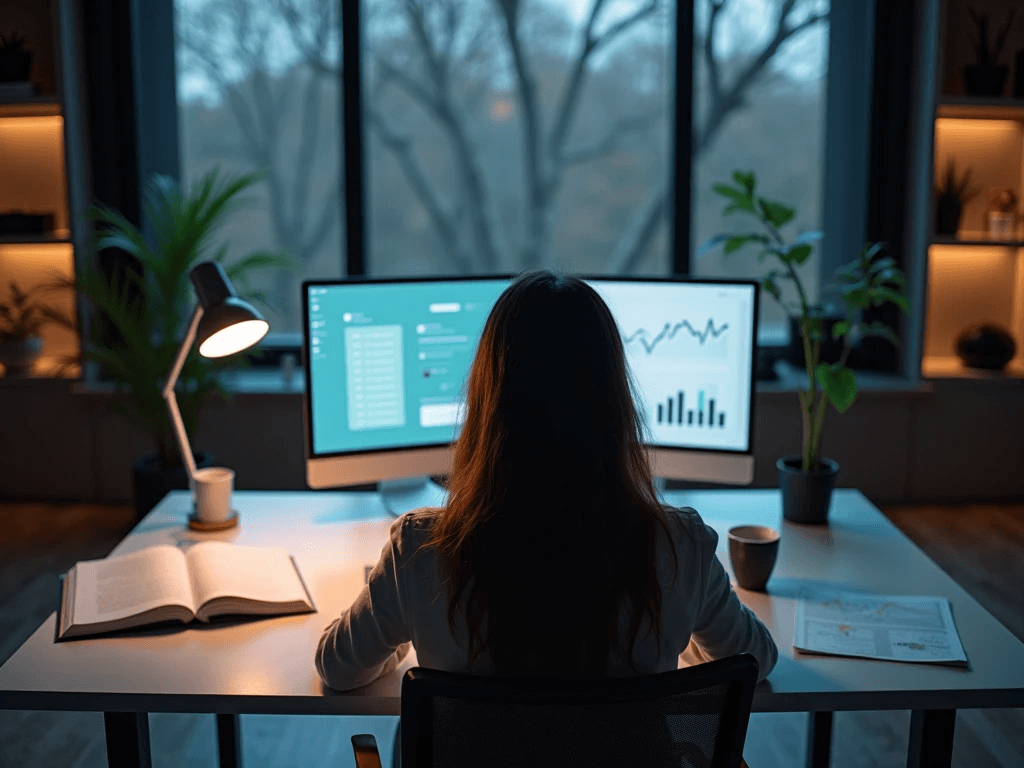Energy Suspension Explained: Boost Your Productivity & Focus
Introduction
In today’s fast-paced world, energy suspension has emerged as a powerful strategy for maximizing productivity and efficiency. But what exactly is energy suspension, and how can it transform your work and life? Whether you’re a busy professional, a student, or someone looking to optimize your daily routine, this guide will provide actionable strategies to effectively harness energy suspension’s power. By the end of this article, you’ll discover proven techniques to boost focus, eliminate distractions, and achieve your goals effortlessly. Let’s dive in!
What is Energy Suspension?
Energy Suspension strategically manages and redirects your mental and physical energy to optimize performance. It involves identifying energy-draining activities and replacing them with high-impact tasks that align with your goals. Think of it as a way to suspend wasted energy and channel it into meaningful, results-driven actions.
For example, instead of spending hours scrolling through social media (an energy drain), you could use that time to complete a critical work task or engage in a rejuvenating activity like exercise. Energy Suspension is not about working harder—it’s about working smarter.
Key Strategies for Energy Suspension
1. Prioritize High-Impact Tasks
One of the core principles of energy suspension is focusing on tasks that yield the most outstanding results. Start your day by identifying and tackling your top three priorities during your peak energy hours. This ensures that your most critical work gets done when your energy and focus are at their highest. By aligning your tasks with your natural energy rhythms, you can maximize productivity and minimize wasted effort.
💡 Example: If you’re a morning person, schedule your most challenging tasks before noon and save routine activities like answering emails for later. Tools like Todoist or Microsoft To Do can help you organize and prioritize your tasks effectively, ensuring you stay on track throughout the day.
Additional Tip: Use the Eisenhower Matrix to categorize tasks based on urgency and importance. This method helps you focus on high-impact activities that align with your long-term goals, making energy suspension even more effective.
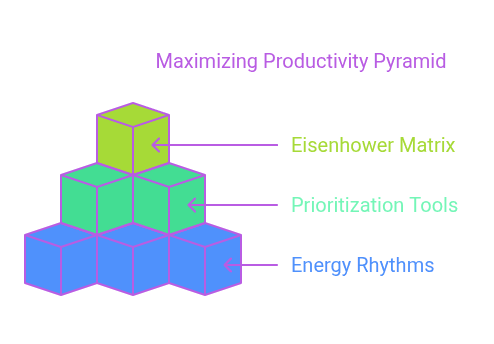
2. Eliminate Energy Drains
Energy drains are activities or habits that sap your energy without providing significant value. Common examples include multitasking, procrastination, and excessive screen time. To practice energy suspension, identify and replace these drains with energy-boosting alternatives. By cutting out these energy-draining activities, you can free up mental and physical resources to focus on what truly matters.
✅ Tip: Use tools like Freedom or RescueTime to minimize distractions and stay focused. These tools help you block distracting websites, track your screen time, and create a more productive work environment, allowing you to channel your energy into high-impact tasks.
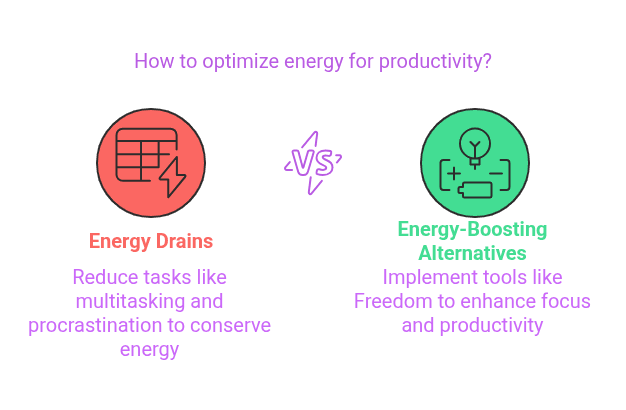
3. Leverage the Power of Breaks
Contrary to popular belief, strategic breaks enhance productivity. Short, intentional breaks help recharge energy and improve focus. The Pomodoro Technique (25 minutes of work followed by a 5-minute break) is highly effective for suspending energy. This method ensures you maintain high energy levels throughout the day by balancing focused work with regular rest.
📊 Case Study: A study by the Draugiem Group found that employees who took regular breaks were significantly more productive than those who worked without interruptions. Incorporating breaks into your routine not only boosts productivity but also prevents burnout, allowing you to sustain energy suspension over the long term..

4. Optimize Your Environment
Your physical and digital environment plays a crucial role in energy suspension. A cluttered workspace or chaotic inbox drains energy and reduces productivity, making it harder to focus on high-impact tasks. Creating a structured, distraction-free environment enhances efficiency and allows you to channel your energy into meaningful work.
Physical Workspace Optimization
- Declutter Regularly: A tidy workspace minimizes distractions and helps you think clearly. Remove unnecessary items and organize your desk to create a calm, focused atmosphere.
- Lighting and Ergonomics: Ensure your workspace has adequate lighting and ergonomic furniture. Poor lighting or uncomfortable seating can lead to fatigue, which undermines energy suspension.
- Personal Touches: Add elements that inspire you, such as plants, motivational quotes, or calming colors. These small touches can boost your mood and energy levels.
Digital Workspace Optimization
- Organize Your Inbox: Use tools like SaneBox or Boomerang to manage your email efficiently. Unsubscribe from unnecessary newsletters and create folders to keep your inbox clutter-free.
- Streamline Notifications: Turn off non-essential notifications on your devices to minimize interruptions. Apps like Focus@Will can help you stay in the zone by providing background music designed to improve concentration.
- Use Cloud Storage: Tools like Google Drive or Dropbox help you organize files and access them easily, reducing the time spent searching for documents.
Actionable Tips for Energy Suspension
- Daily Decluttering Routine: Dedicate 10 minutes at the end of each day to declutter your workspace and set up for a productive next day. This simple habit ensures you start each morning with a clean slate.
- Digital Detox: Schedule regular digital detox sessions to reduce screen time and recharge your mental energy. Apps like Offtime can help you disconnect and focus on offline activities.
- Create Zones: Designate specific areas for different tasks, such as a quiet zone for deep work and a collaborative space for meetings. This helps your brain associate each area with a specific type of activity, improving focus.
By optimizing your environment, you create a space that supports energy suspension, allowing you to work smarter and achieve more with less effort. A well-organized workspace not only boosts productivity but also reduces stress, making it easier to maintain high energy levels throughout the day.
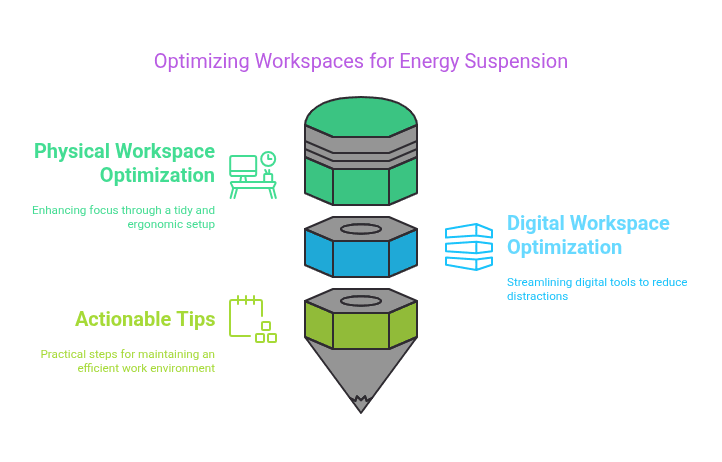
Practical Tips and Real-Life Examples
1. Time Blocking
Time blocking is a powerful technique for suspending energy. By allocating specific time slots for work, breaks, and personal activities, you ensure that your energy is used efficiently. This method helps you stay organized, avoid multitasking, and focus on one task at a time, which is essential for maintaining high productivity levels.
🕘 Example: A CEO might block 9 AM to 11 AM for strategic planning, 11 AM to 12 PM for meetings, and 1 PM to 3 PM for creative work. Tools like Google Calendar or Clockify can help you implement time blocking effectively, ensuring you make the most of your energy throughout the day.
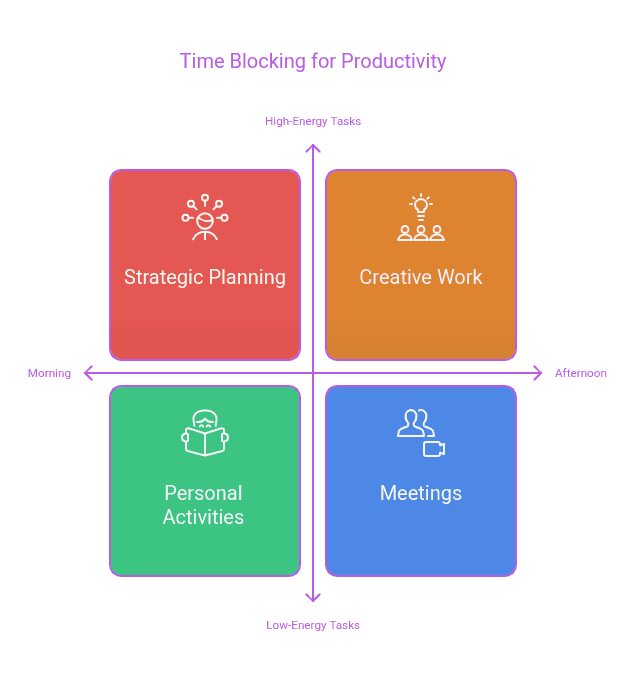
2. Energy-Boosting Habits
Incorporate habits that naturally enhance your energy levels. Regular exercise, a balanced diet, and adequate sleep are foundational for energy suspension. These habits ensure your body and mind are well-fueled and rested, allowing you to perform at your best. Additionally, mindfulness practices like meditation help maintain focus and reduce stress, which can otherwise drain your energy.
🧘 Tip: Start your day with a 10-minute meditation session using apps like Headspace or Calm to set a positive tone. These tools provide guided sessions that help you center your mind, improve clarity, and prepare for a productive day. By integrating these energy-boosting habits into your routine, you’ll create a sustainable foundation for energy suspension and peak performance.
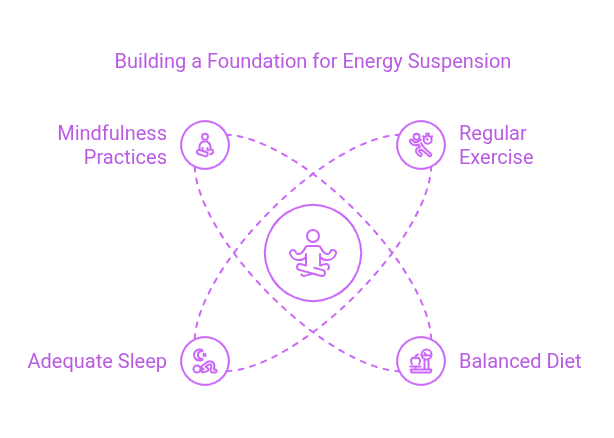
3. Use Technology Wisely
While technology can be distracting, it can also be a powerful ally in energy suspension. Use productivity apps like Trello, Notion, or Asana to organize tasks and track progress. These tools help you break down complex projects into smaller, actionable steps, making it easier to stay focused and manage your energy effectively.
📌 Example: A freelance writer might use a project management tool to break down a large writing project into smaller, manageable tasks. By organizing deadlines, setting reminders, and tracking progress, they can maintain momentum and avoid feeling overwhelmed. Leveraging technology in this way ensures you’re using your energy efficiently and staying on top of your goals.
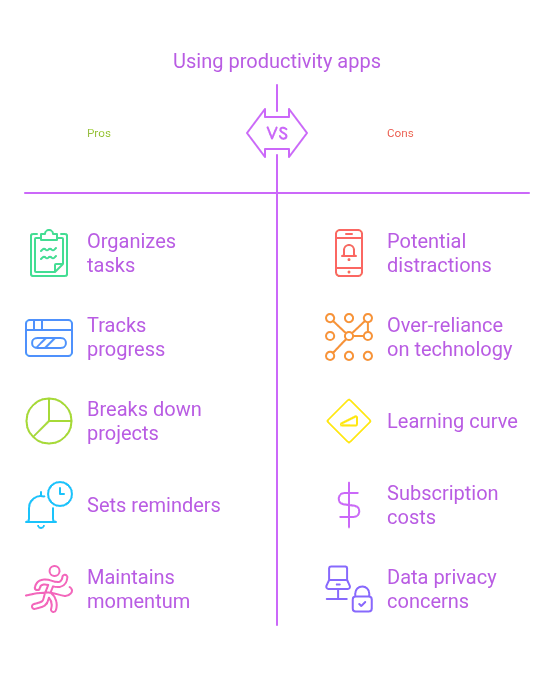
Common Mistakes to Avoid
1. Overloading Your Schedule
Trying to do too much at once leads to burnout and decreased productivity. Instead, focus on high-priority tasks and give them your full attention.
🚀 Solution: Use the 80/20 rule (Pareto Principle) to identify the 20% of tasks that yield 80% of the results.
2. Ignoring Your Energy Patterns
Everyone has unique energy patterns throughout the day. Ignoring these patterns leads to wasted energy and subpar performance. Pay attention to your energy fluctuations and schedule demanding tasks accordingly.
📖 Tip: Keep an energy journal for a week to track your energy levels and identify patterns.
3. Neglecting Self-Care
Self-care is a critical component of energy suspension. Neglecting your physical and mental well-being results in fatigue and decreased productivity. Make time for activities that recharge your energy, such as exercise, hobbies, or spending time with loved ones.
🏞 Example: A busy professional might schedule a weekly yoga class or a weekend hike to recharge.
Conclusion
Energy suspension is more than just a productivity hack—it’s a mindset shift that empowers you to take control of your energy and achieve your goals more quickly. By prioritizing high-impact tasks, eliminating energy drains, and optimizing your environment, you can unlock new levels of efficiency and productivity.
🔥 Call-to-Action: Ready to take your productivity to the next level? Start implementing these energy suspension strategies today, and share your progress in the comments below! Don’t forget to subscribe to our newsletter for more expert tips on mastering efficiency.
FAQs
❓ What is energy suspension, and how does it improve productivity?
➡ Energy suspension is strategically managing your energy to focus on high-impact tasks. It improves productivity by minimizing wasted energy and maximizing focus.
❓ How can I identify my energy drains?
➡ Track your daily activities and note which ones leave you feeling drained. Common energy drains include multitasking, excessive screen time, and procrastination.
❓ What are some tools for practicing energy suspension?
➡ Tools like RescueTime, Freedom, and Trello can help you stay focused and organized.
❓ How do breaks contribute to energy suspension?
➡ Breaks allow you to recharge and return to tasks with renewed focus. Techniques like the Pomodoro Technique are highly effective for maintaining energy levels.
❓ Can energy suspension help with work-life balance?
➡ Yes! By optimizing your energy use, you can accomplish more in less time, leaving room for personal activities and relaxation.
❓ What are the best habits for maintaining high energy levels?
➡ Regular exercise, a balanced diet, adequate sleep, and mindfulness are key energy-saving habits.
❓ How can I apply energy suspension in a team setting?
➡ Encourage your team to prioritize high-impact tasks, take regular breaks, and create a focused work environment.
